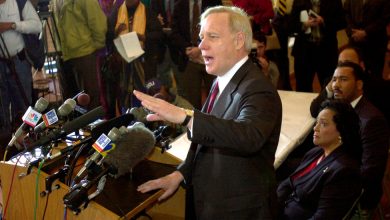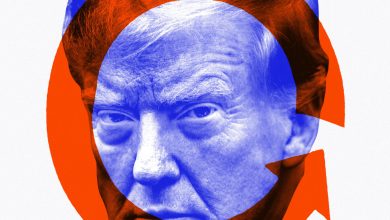What Happens When a Founder Leaves?

People are going to be talking about the blowup at OpenAI for years. ChatGPT itself — a product of OpenAI — could not have concocted a tale as wild as the one that unfolded over the weekend.
OpenAI’s board of directors fired a co-founder, Sam Altman, as chief executive officer on Friday, saying he was “not consistently candid in his communications” with the board. On Sunday the board rejected pressure to take Altman back. Hours later, Microsoft announced it was hiring him and Greg Brockman, another founder, to lead a new advanced A.I. research team.
By Monday morning, OpenAI was in open chaos. More than 700 of the organization’s 770 employees signed a letter saying they might quit to join Altman unless the four-person OpenAI board resigned, The Times reported. Ilya Sutskever, the board member and chief scientist at OpenAI who organized Altman’s ouster, posted on Monday, “I deeply regret my participation in the board’s actions. I never intended to harm OpenAI. I love everything we’ve built together and I will do everything I can to reunite the company.”
There’s a lot to talk about here, including the apparent disagreement between Altman and the OpenAI board about how to steer artificial intelligence research so A.I. doesn’t destroy the human race. But I want to focus on what finance people call the key-person problem.
What happened at OpenAI is an extreme case of an old concern in business, which is that some companies are shockingly vulnerable to the departure of key personnel.
At mining companies, the principal assets are safely in the ground. At railroads, most of the value is in the tracks, the trains, the switching equipment, the rail yards. But in many new-economy businesses, such as tech and media companies, the most important assets can decide while brushing their teeth in the morning to get up and go. Poof — the value is gone.
OpenAI’s board “didn’t fully appreciate the key man risk,” Patrick Bolton, a professor at Columbia Business School, told me.
The fancy term for this issue is the “inalienability of human capital.” Think back to the Declaration of Independence, which says that people are endowed with “certain unalienable rights” and that “among these are life, liberty and the pursuit of happiness.”
Entrepreneurs could probably raise more money for new ventures if they could credibly commit to never, ever leaving. But that would be a surrender of liberty. You can’t do that, even if you want to.
Businesses have come up with workarounds that protect individuals’ liberty while giving investors the assurance they need to commit lots of money to companies. One of these is the noncompete agreement. An employee who signs one of these is free to leave but can’t go to work for a competitor in the same field doing the same thing in a certain region for a certain period.
Sam Altman was not bound by a noncompete agreement because, for one thing, such agreements are banned in California, with only a few exceptions, including agreements in connection with the sale of a business. Such partial bans could soon become the national standard. In January the Federal Trade Commission announced that it would consider a rule to “curtail the unfair use of noncompete clauses and other clauses or agreements that may unfairly limit worker mobility.” It said such a rule “could increase wages by nearly $300 billion per year and expand career opportunities for about 30 million Americans.”
I understand what California and the F.T.C. are trying to do. Two years ago, I wrote about how noncompete agreements have been abused to trap workers and suppress wages of mid- and low-level workers, such as employees of fast-food restaurants.
For high-level executives such as Altman and Brockman, there is a stronger argument for noncompete agreements. If executives can walk out (or be pushed out) the door at any moment, it’s hard to understand why investors would want to stake their money to the company. Bloomberg reported in October that OpenAI was in talks to sell existing employees’ shares at a price that would value the overall company at $86 billion. That assuredly will not happen now.
The U.S. Chamber of Commerce, in objecting to the F.T.C.’s proposed rule about noncompete agreements, cited its economist John McAdams, who wrote in 2019 in a research paper for the F.T.C. that noncompete agreements can “solve a ‘holdup’ problem for certain types of investment (e.g., training, information sharing) into employees.” When the holdup occurs, employers “forgo making certain investments in their work force knowing that employees would be able to subsequently quit and appropriate the value of the investment.”
That’s not the end of the story, though. A downside of noncompete agreements is that they put smart people such as Altman on ice, Evan Starr, an associate professor at the University of Maryland, told me. That is bad for innovation and, he said, offsets the benefit of increasing the security of investment. Starr pointed me to a paper by Liyan Shi of Carnegie Mellon University’s Tepper School of Business, published this year in the journal Econometrica. She found, after netting out the pros and cons, that the optimal policy is not too different from California’s.
Another way around the inalienability problem is to stop key employees from going to a start-up or a rival by asserting that if they go, they would be taking trade secrets with them, which is against the law. The idea is to invoke a doctrine in law called inevitable disclosure, which says that people can’t erase what’s in their heads when they walk out the door — and so it’s not fair to let them go to a rival. But using the inevitable disclosure doctrine to stop someone from being hired isn’t easy, and California doesn’t recognize the doctrine at all.
A highly unusual governance structure complicated matters at OpenAI. The parent is a nonprofit. The plan was for it to fund its work with future profits from a limited partnership that is for-profit. Directors of the nonprofit aren’t even allowed to own shares in the for-profit. But that created an inherent tension between the nonprofit and the for-profit centers, not to mention Microsoft, a major OpenAI investor; Altman; and other employees, all of whose interests were not in perfect alignment.
Amazingly, Microsoft, which has invested more than $13 billion in OpenAI, learned of Altman’s exit only one minute before it was announced, The Times reported. In the end, Microsoft’s money talked when its C.E.O., Satya Nadella, brought Altman and Brockman on board.
Mira Murati, who took over as interim C.E.O. for a couple of days after Altman was booted, posted early Monday, “OpenAI is nothing without its people.” Amid the continuing confusion and infighting, that is one statement that is unequivocally true.
Outlook: Aichi Amemiya and Jeremy Schwartz
The U.S. economy “has more resilience than we previously anticipated,” Aichi Amemiya and Jeremy Schwartz, who are senior US economists at Nomura, wrote in a note to clients on Friday. Also, they wrote, “the pace of tightening credit conditions has been slower than we expected.” But they still expect that “slow-moving credit tightening will eventually weigh on business investment and employment, causing a recession in the medium term.” They said they now expect a “mild” recession to begin in the second half of 2024, rather than in the current quarter.
Quote of the Day
“They did not have a maternity leave policy. So I had my baby in the summer, and then when classes started up again for the next academic year, I taught a full load. I didn’t get any teaching relief from having my first baby.”
— Brigitte Madrian, describing her experience at the University of Chicago’s business school in the late 1990s, in a podcast with the Federal Reserve Bank of St. Louis released May 19, 2021.




